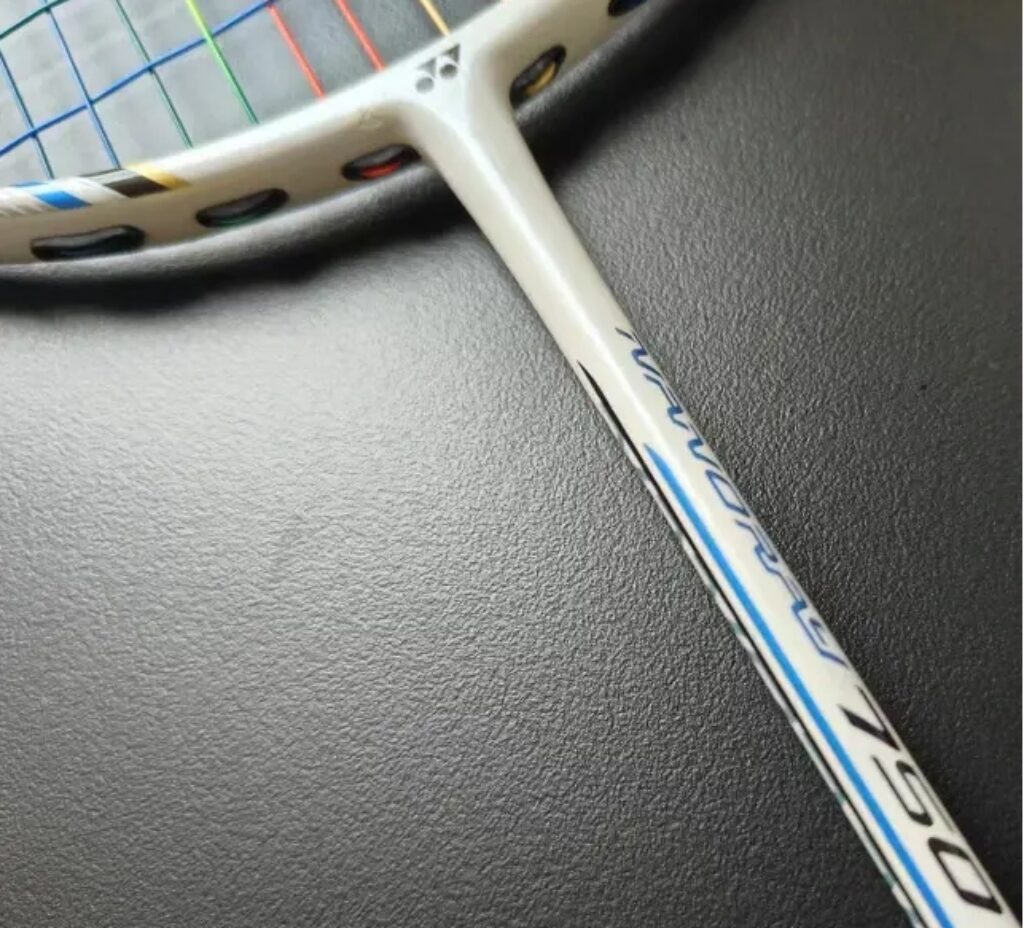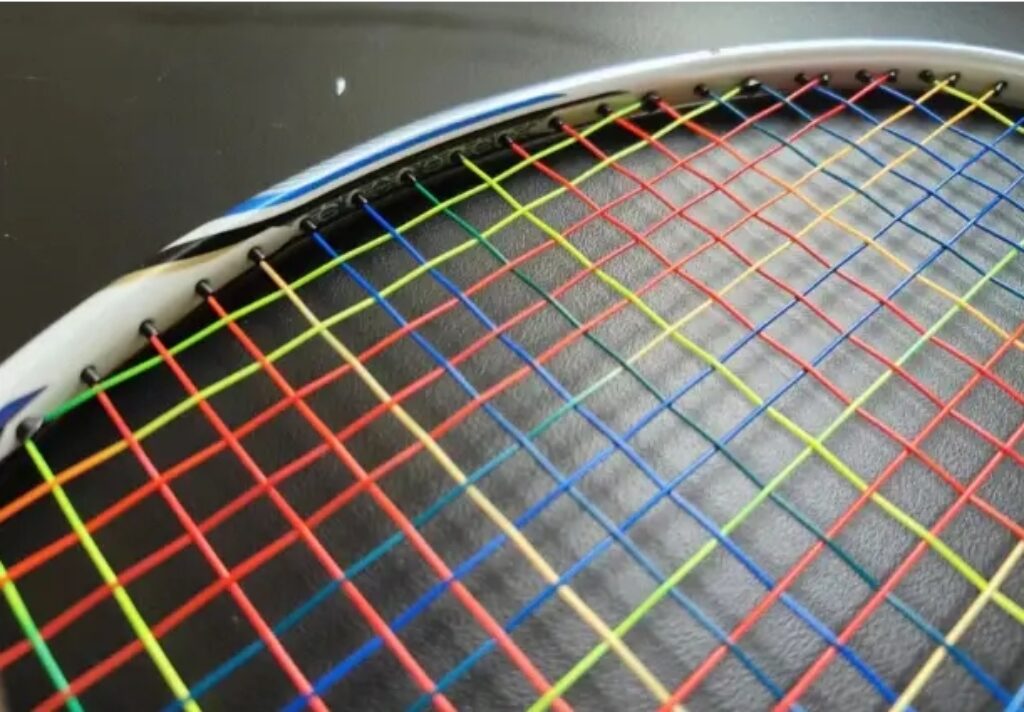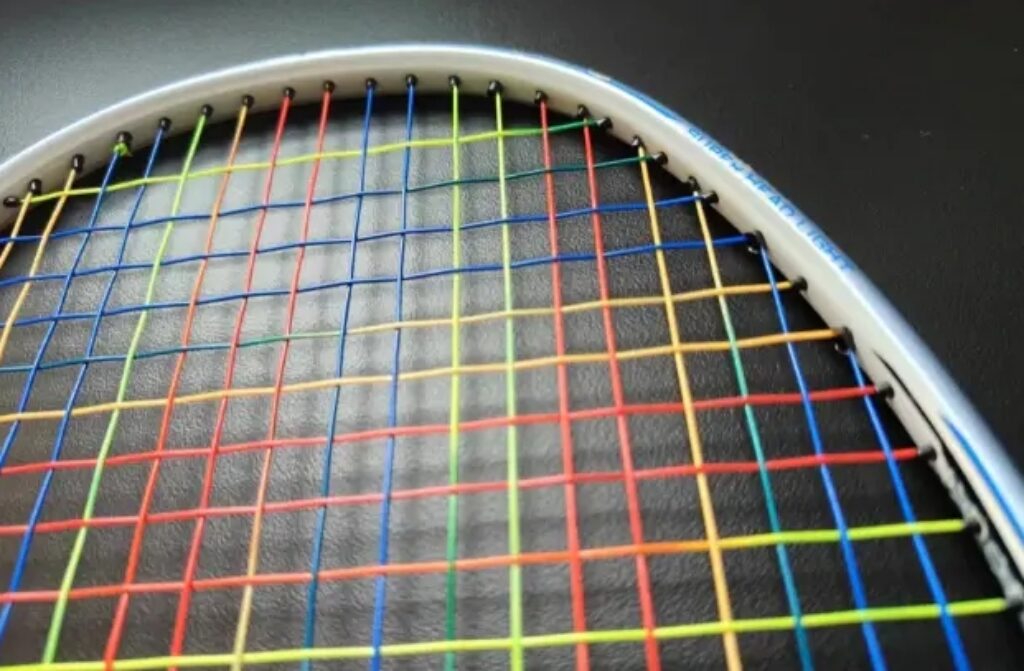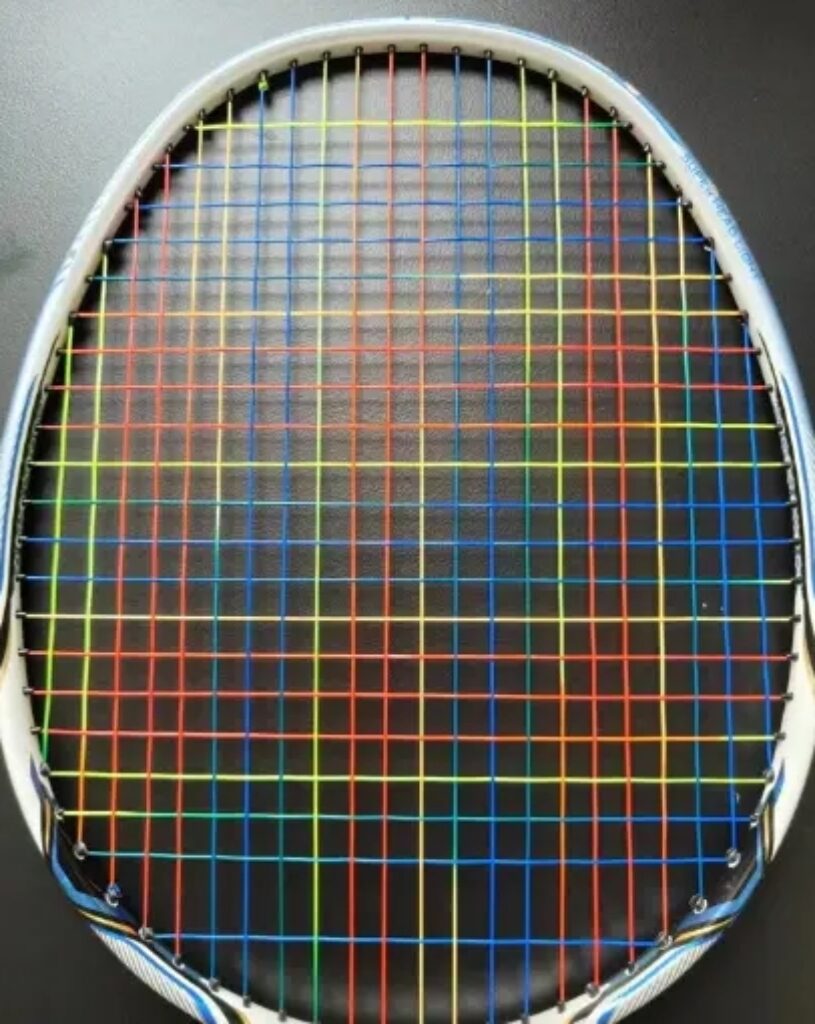The NR series is truly a treasure trove, offering various frame shapes, stiffness levels, and materials, all aimed at interpreting the concept of “speed” from different angles. While the materials and craftsmanship of the time couldn’t deliver peak performance in every aspect, the diverse styles of this series’ high-end models definitely gave players like me who enjoy exploring different rackets a pleasant surprise.
Among them, the NR750 left a lasting impression on me. This is because, on the performance spectrum of the NR series—and even across all rackets—the NR750 is positioned at the very bottom, being the racket with the lowest balance point in history. I think this gimmick alone makes it worth trying.
Specifications:
- 3UG4, bottom cap removed, total weight in use 93.20g, balance point 289mm
- Shaft length 215mm, medium stiffness
- Aero-box frame, 76-hole string bed, 9–3 o’clock grommets, 25 lbs tension warranty, strung at 24–26 lbs with BS720 strings
The racket has both old and new color schemes. More former professional players used the newer colors, but the version I got was the older gemstone blue. Although it’s faded over time, with many scratches on the frame showing the raw carbon fiber, I still appreciate its slender and refreshing original look. The upper part of the frame is an elegant blue-gray, with minimal embellishments covering the 9–3 o’clock positions, then transitioning to the classic white base paint with black line designs. The Nanoray logo is in blue font, with the Nanoray lettering floating near the T-joint against the white background. Although the design is simple, every part of it looks harmonious and well-thought-out, pleasing to the user.

At first glance, the racket doesn’t seem to exude much “speed”—the frame’s aerodynamic qualities aren’t obvious, with no sharp edges or slim areas. It feels similar to the aero-box frames found in the ArcSaber series. However, once you pick it up, you immediately understand why it belongs to the NR series. The head heaviness is almost non-existent; after removing the bottom cap, the balance point of this 3U racket is still under 290mm, which is extremely low. From my experience, only the later Victor Princess 2 comes close, while the old 9001 can’t be compared due to its 4U spec.
Despite its low swing weight, the power transfer when handling shuttle shots is excellent. The NR750 naturally doesn’t have the momentum to send the shuttle deep into the court like head-heavy attack rackets, but I’m more fascinated by the feeling of control it offers. The quick transition from backswing to stroke, combined with its smooth and compact power release, makes it easy to handle, and the shaft’s flex isn’t difficult to manage. During warm-up clears, its charm already began to show.

The secret lies in the NR750’s ability to help the user achieve relatively high contact points. Even when under pressure in the rear court and with footwork not perfectly in place, this racket’s flexibility allows players to easily reach back and escape the situation with an effective shot. In ideal positioning, it provides more chances to take the initiative, enabling you to either push the pace with fast downward shots or vary your shots to disrupt your opponent’s rhythm. It’s highly versatile.
Moreover, whether dealing with backhand, underhand shots, or defending against continuous smashes, the NR750 performed exceptionally well for its time. While the ZSP, the top of the series, suffered from low tolerance due to its small frame, and the NR900 with its high stiffness posed challenges for less skilled players when handling defensive shots, the NR750 truly shined.

Of course, some might worry that the racket sacrifices downward attack capability, but that’s not the case. As mentioned earlier, the NR750’s ability to secure higher contact points makes it easier to hit steep shots. If your power and accuracy are on point, you won’t notice much difference in your smashes. The racket also has excellent shot direction control, and even in rushed shots, it won’t twist or falter, maintaining stable performance. Apart from slight differences in shuttle hold feel due to string tension, the NR750 has some similarities with the ArcSaber series. The only minor drawback is that the power behind heavy smashes might not fully meet the user’s explosive potential. The shaft has a slight flex, so while the shuttle comes off fast, the feel isn’t as solid when defending smashes, and it’s easy for the shuttle to bounce up. The placement might also not be as sharp as with other offensive rackets. However, the NR750 excels in consistency, allowing for smooth, continuous shots, especially in long exchanges.
This continuous, fluid feel, combined with the super head-light design, is truly unique to the NR750.

The NR750 is also known as the “King of Drives,” and in doubles, I definitely experienced the power of its flexibility, stability, and short, sharp strokes in fast exchanges. With such low swing weight, it’s possible to defend shots aimed at awkward areas like the right shoulder, chest, or armpit, as long as your reaction time is quick enough. Additionally, when opponents attempt to vary their shots with wide angles, the NR750’s ability to take the shuttle early often allows you to intercept the shuttle before it reaches a distance that would require a difficult pivot. However, purely from a drive perspective, many newer rackets with lower swing weights and better elasticity now offer even better performance in this regard, such as the NR9001, which serves as a more affordable alternative.
Despite this minor drawback, it’s a small issue. Overall, the NR750 is a highly enjoyable and versatile former high-end racket that performs well in both singles and doubles. I can even recall Hu Yun’s remarkable backhand drive against Kento Momota. While it may not have the highest performance ceiling, it’s definitely fun to use and easy to play with, and I’m baffled by its relatively low popularity.


Leave a Reply